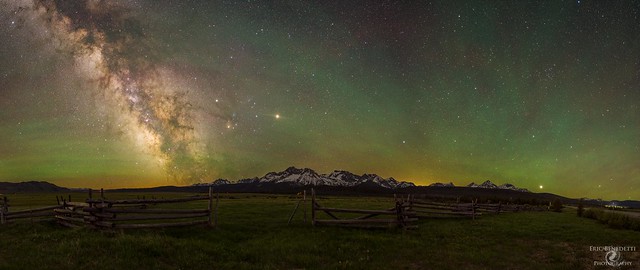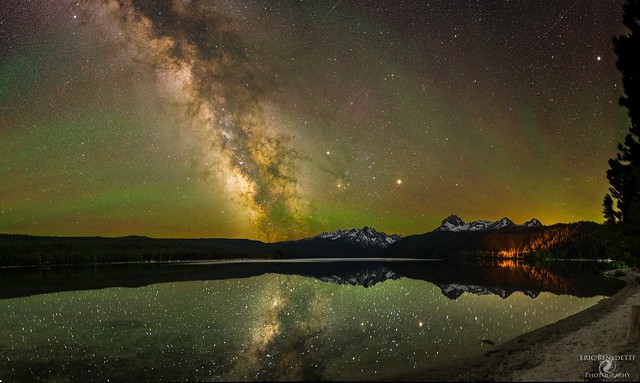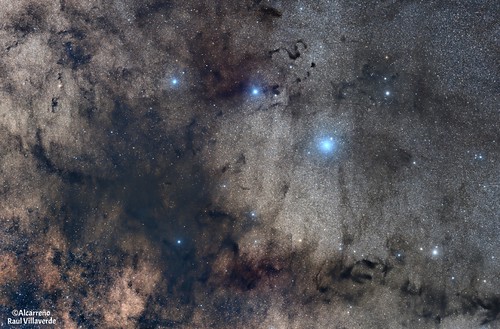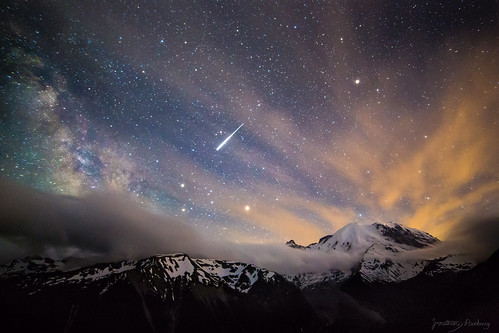Submissions: 2016 July
Submissions: 2016 July
__________________________________________________________________________________________________
Please post your images here.
Please see this thread before posting images; posting images demonstrates your agreement with
the possible uses for your image.
If hotlinking to an image, please ensure it is under 400K.
Hotlinks to images over 400K slow down the thread too much and will be disabled.
Thank you!
_________________________________________________________________________________________________
<- Previous submissions
[c]«« Discuss Anything in Astronomy «» Visit The Asterisk Main Page «» See Introductory Astonomy Lectures »»
«« Introduce Yourself «» Please Read the Rules »»[/c]
Please post your images here.
Please see this thread before posting images; posting images demonstrates your agreement with
the possible uses for your image.
If hotlinking to an image, please ensure it is under 400K.
Hotlinks to images over 400K slow down the thread too much and will be disabled.
Thank you!
_________________________________________________________________________________________________
<- Previous submissions
[c]«« Discuss Anything in Astronomy «» Visit The Asterisk Main Page «» See Introductory Astonomy Lectures »»
«« Introduce Yourself «» Please Read the Rules »»[/c]
Know the quiet place within your heart and touch the rainbow of possibility; be
alive to the gentle breeze of communication, and please stop being such a jerk. — Garrison Keillor
alive to the gentle breeze of communication, and please stop being such a jerk. — Garrison Keillor
- moonrocks
- Science Officer
- Posts: 119
- Joined: Tue Jun 30, 2015 6:50 pm
- Location: spain, valencia
- Contact:
Re: Submissions: 2016 July
PROPELLER NEBULA
URL of website, http://moonrocksastro.com/index.php/201 ... our/web-3/
Copyright: Paul C Swift
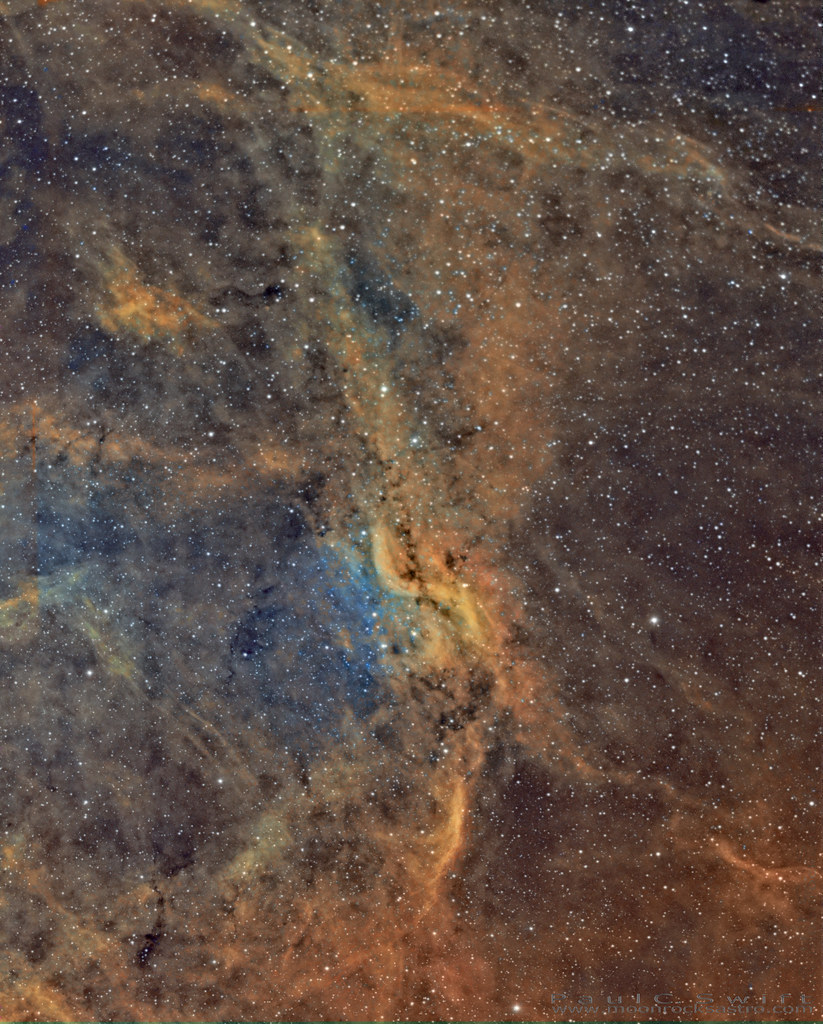 DWB111 Propeller Nebula in narrowband by Paul C. Swift, on Flickr
DWB111 Propeller Nebula in narrowband by Paul C. Swift, on Flickr
URL of website, http://moonrocksastro.com/index.php/201 ... our/web-3/
Copyright: Paul C Swift
 DWB111 Propeller Nebula in narrowband by Paul C. Swift, on Flickr
DWB111 Propeller Nebula in narrowband by Paul C. Swift, on FlickrRe: Submissions: 2016 July
Sun shield in different light bands (CaK, H-alpha and white light)
All material/data collected 24th of May 2016 when we had quite big and interesting sunspot (active region) on the Sun shield.
This region is clearliy visible in CaK light.
Photo is composition of three bands put together in editing program.

Link to full resolution:
http://www.astrobin.com/full/253367/B/
Equipment:
Telescopes: Lunt 60 CaK B600, Soligor 500/5,6, Lunt Solar System LS50Tha PT
Camera: Point Grey Chameleon 3 Mono
Mount: Celestron CG-5
https://www.facebook.com/lukasz.sujka.a ... =3&theater
All material/data collected 24th of May 2016 when we had quite big and interesting sunspot (active region) on the Sun shield.
This region is clearliy visible in CaK light.
Photo is composition of three bands put together in editing program.

Link to full resolution:
http://www.astrobin.com/full/253367/B/
Equipment:
Telescopes: Lunt 60 CaK B600, Soligor 500/5,6, Lunt Solar System LS50Tha PT
Camera: Point Grey Chameleon 3 Mono
Mount: Celestron CG-5
https://www.facebook.com/lukasz.sujka.a ... =3&theater
-
cosmicwreckingball
- Ensign
- Posts: 31
- Joined: Tue May 26, 2015 2:57 pm
- AKA: Matt Harbison
- Location: Chattanooga, TN
- Contact:
The Summer Triangle- Re: Submissions: 2016 July
"The Summer Triangle"
Click here for HD version: http://www.astrobin.com/full/253825/0/?real&mod
Just stop for a second and look up.
Look at all those points of light. Stars, some Suns like our own, some 100 times the size of our own. Scientists now believe most stars host planets, and even some are capable of containing life.
This makes me feel very tiny, yet so connected.
Details:
The Summer Triangle is an "asterism" including the brightest three stars in the constellations Aquila, Cygnus, and Lyra. The stars Altair, Deneb, and Vega usher in the summer Milky Way. The best view of our our galactic core as we swing around on the Orion arm or "Orion Spur", as it's often called. We’re located close to the inner rim of this spiral arm, about halfway along its length. From the constellation Sagittarius at its apex to Cassiopeia at the base, the photo highlights our edge on view of the Milky Way Galaxy.
Photo details:
72 photos stacked and stitched taken with a star tracker (6 photos per 12 panels) and 3 minutes of integration at ISO 800 with a 50mm lens. Calibrated and stacked in Pixinsight. Stitched and exported in PS. Taken during the last quarter moon at Fall Creek Falls State Park. A few clouds streamed overhead and left their mark on the photo, but I felt it added a bit of weight to the photo.

Click here for HD version: http://www.astrobin.com/full/253825/0/?real&mod
Just stop for a second and look up.
Look at all those points of light. Stars, some Suns like our own, some 100 times the size of our own. Scientists now believe most stars host planets, and even some are capable of containing life.
This makes me feel very tiny, yet so connected.
Details:
The Summer Triangle is an "asterism" including the brightest three stars in the constellations Aquila, Cygnus, and Lyra. The stars Altair, Deneb, and Vega usher in the summer Milky Way. The best view of our our galactic core as we swing around on the Orion arm or "Orion Spur", as it's often called. We’re located close to the inner rim of this spiral arm, about halfway along its length. From the constellation Sagittarius at its apex to Cassiopeia at the base, the photo highlights our edge on view of the Milky Way Galaxy.
Photo details:
72 photos stacked and stitched taken with a star tracker (6 photos per 12 panels) and 3 minutes of integration at ISO 800 with a 50mm lens. Calibrated and stacked in Pixinsight. Stitched and exported in PS. Taken during the last quarter moon at Fall Creek Falls State Park. A few clouds streamed overhead and left their mark on the photo, but I felt it added a bit of weight to the photo.

-
Bi2L
- Science Officer
- Posts: 103
- Joined: Tue Jul 19, 2011 11:24 am
- AKA: Bill Metallinos
- Location: Corfu, Greece
- Contact:
Re: Submissions: 2016 July
Moon occults Aldebaran
Minutes just before the Occultation the Waning Crescent Moon is approaching Aldebaran near the crater Pythagoras!
Canon eos 700D, Takahashi Toa 130 Apo, 1000mm, f/7.7, Astrotech Flattener, iso100
Astronomic Society of Corfu
Moon 26,95 days old
distance 365765km
Aldebaran distance 65 light years
05:03UT+3, 02 July 2016
Moon meets Aldebaran above the monastery of Vlacherna, Corfu
Just above the old monastery of Vlacherna, near Pontikonisi Corfu and a little before the Occultation, we can Moon and Aldebaran together with all the Hyades, the half-sisters to the Pleiades and the head of the constellation of Taurus, the bull.
Canon eos 5D mk2, ef 100-400 is usm, 160mm, iso800, 5sec
Minutes just before the Occultation the Waning Crescent Moon is approaching Aldebaran near the crater Pythagoras!
Canon eos 700D, Takahashi Toa 130 Apo, 1000mm, f/7.7, Astrotech Flattener, iso100
Astronomic Society of Corfu
Moon 26,95 days old
distance 365765km
Aldebaran distance 65 light years
05:03UT+3, 02 July 2016
Moon meets Aldebaran above the monastery of Vlacherna, Corfu
Just above the old monastery of Vlacherna, near Pontikonisi Corfu and a little before the Occultation, we can Moon and Aldebaran together with all the Hyades, the half-sisters to the Pleiades and the head of the constellation of Taurus, the bull.
Canon eos 5D mk2, ef 100-400 is usm, 160mm, iso800, 5sec
-
varadinagypal
- Ensign
- Posts: 82
- Joined: Fri Dec 20, 2013 9:29 pm
Re: Submissions: 2016 July
The Light of the Core
(crop from a 3 panel mosaic at 50mm f/2.2, 2-3 min subs, Canon 1100D mod, Namibia)
http://csillagtura.ro
Copyright: Pál VÁRADI NAGY
Larger resolution: http://csillagtura.ro/wp-content/upload ... inal_3.jpg
Thumbnail:
(crop from a 3 panel mosaic at 50mm f/2.2, 2-3 min subs, Canon 1100D mod, Namibia)
http://csillagtura.ro
Copyright: Pál VÁRADI NAGY
Larger resolution: http://csillagtura.ro/wp-content/upload ... inal_3.jpg
Thumbnail:
-
Erictheastrojunkie
- Asternaut
- Posts: 7
- Joined: Sun May 08, 2016 3:25 am
Re: Submissions: 2016 July
Gate to the Sawtooths
URL of website: https://www.flickr.com/gp/75706432@N02/ocddG2
Copyright: Eric Benedetti
Link to fullsize image: https://www.flickr.com/photos/75706432@ ... /lightbox/
This is a shot taken just outside Stanley, Idaho looking towards the Sawtooth Mountains, the airglow that night was by far the most intense I've ever imaged. A total of 12 shots went into this, two rows of 6, shot with a Nikon D600 and Rokinon 24mm f1.4 lens on an iOptron Skytracker mount (turned on for the row of sky shots, off for foreground shots). Each shot is a 3 minute exposure at f2 and ISO 800, after taking the first shots I thought there was something wrong with my camera settings or the sensor, each image was coming out so green and washed out. When I imported for post processing it dawned on me that the sky was actually just exploding with airglow.
This second image was taken a little bit later that night about 5 miles away at Redfish Lake.
Fullsize: https://www.flickr.com/photos/75706432@ ... /lightbox/
This one is 3 rows of 5 images, same settings as before:
URL of website: https://www.flickr.com/gp/75706432@N02/ocddG2
Copyright: Eric Benedetti
Link to fullsize image: https://www.flickr.com/photos/75706432@ ... /lightbox/
This is a shot taken just outside Stanley, Idaho looking towards the Sawtooth Mountains, the airglow that night was by far the most intense I've ever imaged. A total of 12 shots went into this, two rows of 6, shot with a Nikon D600 and Rokinon 24mm f1.4 lens on an iOptron Skytracker mount (turned on for the row of sky shots, off for foreground shots). Each shot is a 3 minute exposure at f2 and ISO 800, after taking the first shots I thought there was something wrong with my camera settings or the sensor, each image was coming out so green and washed out. When I imported for post processing it dawned on me that the sky was actually just exploding with airglow.
This second image was taken a little bit later that night about 5 miles away at Redfish Lake.
Fullsize: https://www.flickr.com/photos/75706432@ ... /lightbox/
This one is 3 rows of 5 images, same settings as before:
Re: Submissions: 2016 July
Who is hiding behind that dust there in the galaxy center ?
http://www.astromarcin.pl
Copyright: MArcin PAciorek Better resolution: http://astromarcin.pl/images/aaa2016/Mi ... r_1800.jpg
http://www.astromarcin.pl
Copyright: MArcin PAciorek Better resolution: http://astromarcin.pl/images/aaa2016/Mi ... r_1800.jpg
Re: Submissions: 2016 July
Relfected Rainbows Above Vajont Dam, Italy
Copyright: Pictores Caeli as follow
Dario Giannobile (http://www.dariogiannobile.com/)
Giorgia Hofer (http://www.giorgiahoferphotography.com/)
Marco Meniero (http://www.meniero.it/)
Marcella Giulia Peace (http://www.greenflash.photo/)
On May 2016, Pictores Caeli Team have taken a extraordinary picture on Reflection Rainbows above the Vajont Dam: it come as no surprise that rainbows can be seen reflected in water, but more interesting are rainbows from light which has first been reflected off a lake before reaching drops. In this case two arcs are possible: direct rainbow and a reflected, inverted, bow. This means that under conditions of low sun and calm water, a rain sheet is exposed to two suns almost equale brightness. As conseguence two sets of rainbows are created about the two antisolar points. Pictores Caeli Team is an association founded by four friends who share a passion for artistic astrophotography.
EPOD of June 29th 2016
as described in EPOD site:
"It's sometimes easy to misinterpret optical phenomena, especially if a long focus lens is used or if the perspective is unexpected. The photo above is such an example. The colors and color repetition appear to be some sort of corona, but what we're actually seeing is a rainbow. In fact, we see parts of two primary rainbows; the top portion of a normal rainbow and a reflected rainbow -- likely reflected from the water impounded by the dam at the bottom. The Sun was evidently near the horizon when the photo was snapped.
In essence, the Sun has reflected off smooth lake water, and the upward going reflected rays have formed a second rainbow that's centered on a point the same distance above the horizon as the Sun. The normal primary rainbow is centered on the antisolar point below the horizon. If the photo had been taken at exactly sunset, these two points and their corresponding rainbows would have overlapped. However, since it was taken shortly before sunset, the two bows are just slightly separated. Photo taken on May 2, 2016, at Vajont Dam in Italy. To learn more about rainbows see Les Cowley's Atmospheric Optics."
Copyright: Pictores Caeli as follow
Dario Giannobile (http://www.dariogiannobile.com/)
Giorgia Hofer (http://www.giorgiahoferphotography.com/)
Marco Meniero (http://www.meniero.it/)
Marcella Giulia Peace (http://www.greenflash.photo/)
On May 2016, Pictores Caeli Team have taken a extraordinary picture on Reflection Rainbows above the Vajont Dam: it come as no surprise that rainbows can be seen reflected in water, but more interesting are rainbows from light which has first been reflected off a lake before reaching drops. In this case two arcs are possible: direct rainbow and a reflected, inverted, bow. This means that under conditions of low sun and calm water, a rain sheet is exposed to two suns almost equale brightness. As conseguence two sets of rainbows are created about the two antisolar points. Pictores Caeli Team is an association founded by four friends who share a passion for artistic astrophotography.
EPOD of June 29th 2016
as described in EPOD site:
"It's sometimes easy to misinterpret optical phenomena, especially if a long focus lens is used or if the perspective is unexpected. The photo above is such an example. The colors and color repetition appear to be some sort of corona, but what we're actually seeing is a rainbow. In fact, we see parts of two primary rainbows; the top portion of a normal rainbow and a reflected rainbow -- likely reflected from the water impounded by the dam at the bottom. The Sun was evidently near the horizon when the photo was snapped.
In essence, the Sun has reflected off smooth lake water, and the upward going reflected rays have formed a second rainbow that's centered on a point the same distance above the horizon as the Sun. The normal primary rainbow is centered on the antisolar point below the horizon. If the photo had been taken at exactly sunset, these two points and their corresponding rainbows would have overlapped. However, since it was taken shortly before sunset, the two bows are just slightly separated. Photo taken on May 2, 2016, at Vajont Dam in Italy. To learn more about rainbows see Les Cowley's Atmospheric Optics."
Re: Submissions: 2016 July
Moon approaching Aldebaran
A few minutes before the grazing occultation of Aldebaran by the Moon.
07-02-2016 Monte Pollino (Potenza) - Italy
Canon 650D and Tele Lens Canon EF200mm f/2.8L II USM (f/2.8 - 0.8 sec)
Star Party del Pollino
Photographer: Luigi Fiorentino
link Full Res
https://www.flickr.com/photos/alfadubhe ... ed-public/
A few minutes before the grazing occultation of Aldebaran by the Moon.
07-02-2016 Monte Pollino (Potenza) - Italy
Canon 650D and Tele Lens Canon EF200mm f/2.8L II USM (f/2.8 - 0.8 sec)
Star Party del Pollino
Photographer: Luigi Fiorentino
link Full Res
https://www.flickr.com/photos/alfadubhe ... ed-public/
-
michele.gz
- Ensign
- Posts: 13
- Joined: Fri Sep 27, 2013 10:28 am
Re: Submissions: 2016 July
Milky Way over Trave
Portonovo bay, Italy
Copyright: Michele Guzzini & Michele Montanari
The Trave (literally "girder") is a natural rock that extends for over one kilometer from the Conero reef to the sea. The building is an abandoned human construction used for fishing in the past.
The way to reach this location is very hard and risky due to the common landslides of the clay reef. To achieve this results we had to plan the photo session during a perfect clear sky night, after a rainy day, on 14 June 2016, we was lucky to find a window of pristine sky just after the moonset and after the storm passed by.
The image is the result of 60 shots for a total integration time of 40 minutes. Acquired with Nikon D800, 14-24 F2.8 and our DIY star tracker.
LINK TO HIGH RESOLUTION
Portonovo bay, Italy
Copyright: Michele Guzzini & Michele Montanari
The Trave (literally "girder") is a natural rock that extends for over one kilometer from the Conero reef to the sea. The building is an abandoned human construction used for fishing in the past.
The way to reach this location is very hard and risky due to the common landslides of the clay reef. To achieve this results we had to plan the photo session during a perfect clear sky night, after a rainy day, on 14 June 2016, we was lucky to find a window of pristine sky just after the moonset and after the storm passed by.
The image is the result of 60 shots for a total integration time of 40 minutes. Acquired with Nikon D800, 14-24 F2.8 and our DIY star tracker.
LINK TO HIGH RESOLUTION
- AlexMaragos
- Ensign
- Posts: 83
- Joined: Tue Jan 04, 2011 4:02 pm
- AKA: Alexandros Maragos
- Location: In transit
- Contact:
Re: Submissions: 2016 July
The Milky Way rise in green Airglow last night over the Peloponnese peninsula at the Corinthian Gulf in southern Greece.
http://www.alexandrosmaragos.com
Copyright: Alexandros Maragos
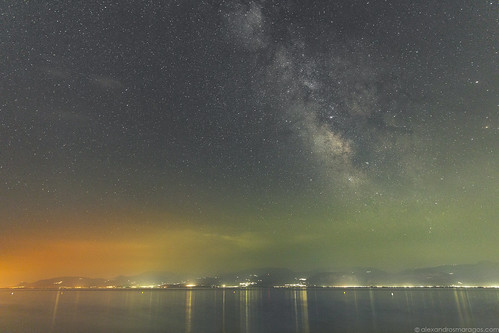
The Milky Way and green Airglow over Peloponnese by Alexandros Maragos, on Flickr
http://www.alexandrosmaragos.com
Copyright: Alexandros Maragos

The Milky Way and green Airglow over Peloponnese by Alexandros Maragos, on Flickr
Last edited by AlexMaragos on Mon Jul 04, 2016 2:10 pm, edited 1 time in total.
Re: Submissions: 2016 July
Aldebaran occultation at sunrise
Copyright: Tunç Tezel
The most recent Aldebaran occultation was visible from my hometown Bursa, Turkey around sunrise on 2nd July 2016, so I was ready to catch it at the rooftop of our apartment block. Like with earlier similar occultations, I used my trusty 8" SCT to see the event. The disappearance was actually 13 minutes after the theoretical sunrise, but the Sun did not peek above the higher hills in the ENE direction until a minute after the disappearance of Aldebaran. Thankfully the sky was nice and clear, so it was easy to follow the event in the blue skies of early morning.
This image shows how Aldebaran looked to advance closer and closer to the crescent before the disappearance. Of course, the Moon was drifting to the east to cover Aldebaran. I shot the 7 individual pictures every 2~3 minutes with the 8" SCT and then put them together to get this multi-exposure picture.
Copyright: Tunç Tezel
The most recent Aldebaran occultation was visible from my hometown Bursa, Turkey around sunrise on 2nd July 2016, so I was ready to catch it at the rooftop of our apartment block. Like with earlier similar occultations, I used my trusty 8" SCT to see the event. The disappearance was actually 13 minutes after the theoretical sunrise, but the Sun did not peek above the higher hills in the ENE direction until a minute after the disappearance of Aldebaran. Thankfully the sky was nice and clear, so it was easy to follow the event in the blue skies of early morning.
This image shows how Aldebaran looked to advance closer and closer to the crescent before the disappearance. Of course, the Moon was drifting to the east to cover Aldebaran. I shot the 7 individual pictures every 2~3 minutes with the 8" SCT and then put them together to get this multi-exposure picture.
- marion165
- Science Officer
- Posts: 117
- Joined: Fri Oct 21, 2011 6:27 pm
- Location: Lancaster, PA USA
- Contact:
Re: Submissions: 2016 July
Fireflies and the Flower Patch
https://flic.kr/p/HPX2t4
Copyright: Marion Haligowski
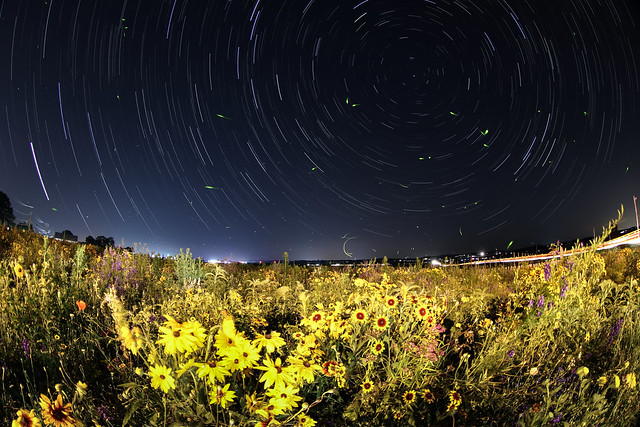 Fireflies and the Flower Patch by Marion Haligowski, on Flickr
Fireflies and the Flower Patch by Marion Haligowski, on Flickr
A circumpolar star trail was imaged above a field of wildflowers in Lancaster, PA. The firefly activity this evening was amazing! I especially like the loop made by the firefly near the center of the image. The photo was made of 130 twenty second exposures taken with a Canon T6s and a Canon 8-15 mm f/4L lens. (ISO 400, 9mm, f/4.0) The images were stacked using StarStaX.
https://flic.kr/p/HPX2t4
Copyright: Marion Haligowski
 Fireflies and the Flower Patch by Marion Haligowski, on Flickr
Fireflies and the Flower Patch by Marion Haligowski, on FlickrA circumpolar star trail was imaged above a field of wildflowers in Lancaster, PA. The firefly activity this evening was amazing! I especially like the loop made by the firefly near the center of the image. The photo was made of 130 twenty second exposures taken with a Canon T6s and a Canon 8-15 mm f/4L lens. (ISO 400, 9mm, f/4.0) The images were stacked using StarStaX.
Re: Submissions: 2016 July
Silver forest(noctilucent clouds)
Author's site: http://www.astroadventures.ru/
Copyright: Yuri Zvezndy
Connection
Author's site: http://www.astroadventures.ru/
Copyright: Yuri Zvezndy
Author's site: http://www.astroadventures.ru/
Copyright: Yuri Zvezndy
Connection
Author's site: http://www.astroadventures.ru/
Copyright: Yuri Zvezndy
- astrochuck
- Ensign
- Posts: 45
- Joined: Thu Jun 28, 2012 8:48 pm
- AKA: Chuck Manges
- Contact:
Re: Submissions: 2016 July
Rho Ophiuchi Nebula (IC4604) & friends
copyright: Chuck Manges
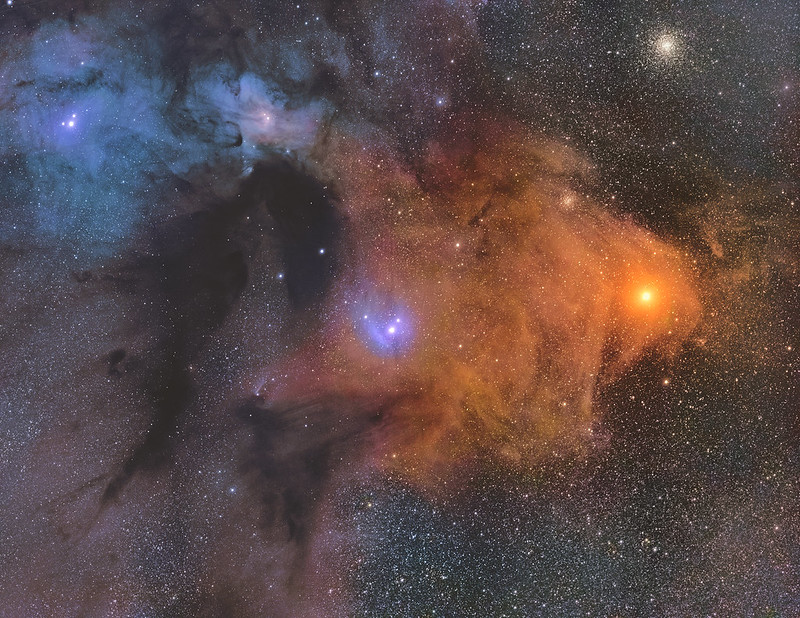
Rho Ophiuchi by Chuck Manges, on Flickr
15 panel mosaic-
15x120sec each panel
QHY23M w/Baader Luminance Filter
11" Celestron EdgeHD w/Hyperstar
Color (RGB) data from a single image
4x1200 sec
QHY10 OSC
55mm Canon Lens
There are so many interesting targets in this area in addition to the rho Ophi nebula(upper left). Reflection nebula IC4603, globulars NGC6144 & M4 to name a few
copyright: Chuck Manges

Rho Ophiuchi by Chuck Manges, on Flickr
15 panel mosaic-
15x120sec each panel
QHY23M w/Baader Luminance Filter
11" Celestron EdgeHD w/Hyperstar
Color (RGB) data from a single image
4x1200 sec
QHY10 OSC
55mm Canon Lens
There are so many interesting targets in this area in addition to the rho Ophi nebula(upper left). Reflection nebula IC4603, globulars NGC6144 & M4 to name a few
-
Andromeda 2013
- Science Officer
- Posts: 196
- Joined: Tue Jul 09, 2013 2:11 pm
- Contact:
Re: Submissions: 2016 July
M-8 Lagoon Nebula
Lower right M-8 Lagoon Nebula
Upper left M-20 Trifid Nebula
C-11 CGEM-DX Canon 6d Baader Mod
F/2 Hyperstar
lps2 filter
140 lights 20 sec 800 iso
40 darks
40 bias
12 flats
46 minutes 25 seconds total exposure time.
stacked in deepsky stacker 3.3.4
targets to the south just over the roof tops.
clink on link for larger version
https://www.flickr.com/photos/92681330@N06/27992912682
Copyright: Daniel Pasternak
Lower right M-8 Lagoon Nebula
Upper left M-20 Trifid Nebula
C-11 CGEM-DX Canon 6d Baader Mod
F/2 Hyperstar
lps2 filter
140 lights 20 sec 800 iso
40 darks
40 bias
12 flats
46 minutes 25 seconds total exposure time.
stacked in deepsky stacker 3.3.4
targets to the south just over the roof tops.
clink on link for larger version
https://www.flickr.com/photos/92681330@N06/27992912682
Copyright: Daniel Pasternak
-
astrometbcn
- Ensign
- Posts: 67
- Joined: Tue Feb 23, 2016 8:26 am
Re: Submissions: 2016 July
The Veil complex
https://www.facebook.com/jose.jimenezjj
https://twitter.com/JJastromet
https://www.flickr.com/photos/21144055@N04/albums
Copyright: José Jiménez Priego
https://www.facebook.com/jose.jimenezjj
https://twitter.com/JJastromet
https://www.flickr.com/photos/21144055@N04/albums
Copyright: José Jiménez Priego
-
rickstevenson
- Asternaut
- Posts: 9
- Joined: Fri Dec 07, 2012 7:24 am
NGC6164/6165 HaOiiiRGB
Bigger version: http://www.astrobin.com/full/254123/0/
Copyright Rick Stevenson: http://www.astrobin.com/users/RickS/
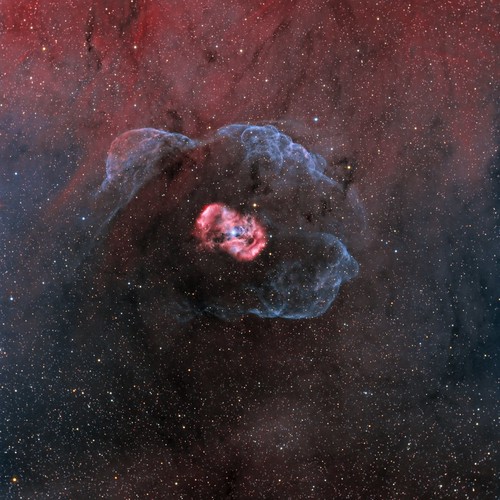
Copyright Rick Stevenson: http://www.astrobin.com/users/RickS/

Last edited by rickstevenson on Tue Jul 05, 2016 11:00 am, edited 1 time in total.
- moonrocks
- Science Officer
- Posts: 119
- Joined: Tue Jun 30, 2015 6:50 pm
- Location: spain, valencia
- Contact:
Re: Submissions: 2016 July
"Stained glass in Cygnus"
URL of website, http://moonrocksastro.com/wp-content/up ... 2000px.jpg
Copyright: Paul C Swift
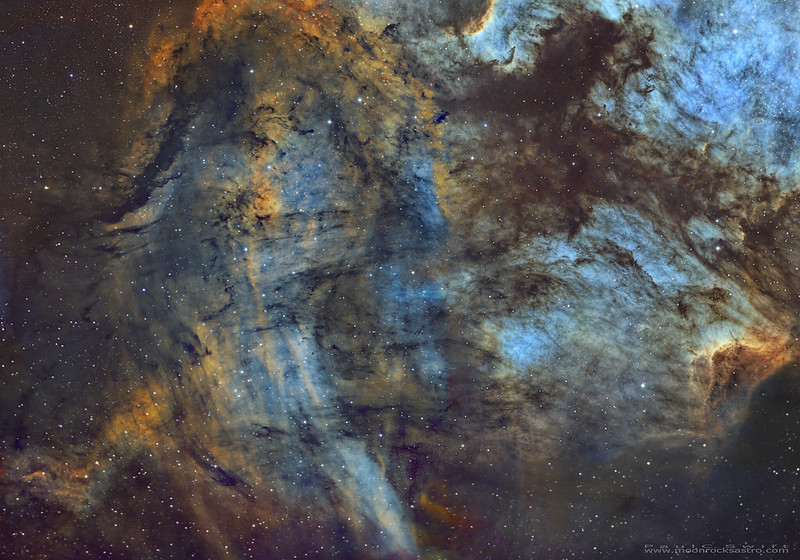 E mission nebula in the constellation Cygnus by Paul C. Swift, on Flickr
E mission nebula in the constellation Cygnus by Paul C. Swift, on Flickr
URL of website, http://moonrocksastro.com/wp-content/up ... 2000px.jpg
Copyright: Paul C Swift
 E mission nebula in the constellation Cygnus by Paul C. Swift, on Flickr
E mission nebula in the constellation Cygnus by Paul C. Swift, on Flickr
Last edited by moonrocks on Tue Jul 05, 2016 2:37 pm, edited 1 time in total.
-
Rafeee
- Ensign
- Posts: 51
- Joined: Fri Feb 24, 2012 8:52 pm
- Location: Hungary, Zselic Starry Sky Park
- Contact:
Re: Submissions: 2016 July
Milky way with lightning and meteor
copyright: Rafael Schmall

Large version: http://ejszakaitajkep.hu/2016_07_02_zscsp_4437_m.jpg
A lonely storm under the Milky Way, and a lucky catch... a bright fireball appeared. How about red sprites? Maybe next time...
This is a single shot with Canon 6D + Canon 28-105 USM (ISO8000, f3.5, 28mm, 20sec)
I take this picture from the Zselic Observatory's 25 meter tall tower.
Rafael Schmall
Hungary, Somogy, Zselic Observatory
http://www.ejszakaitajkep.hu
http://www.asztrofoto.hu/adatlap/Rafeee
copyright: Rafael Schmall

Large version: http://ejszakaitajkep.hu/2016_07_02_zscsp_4437_m.jpg
A lonely storm under the Milky Way, and a lucky catch... a bright fireball appeared. How about red sprites? Maybe next time...
This is a single shot with Canon 6D + Canon 28-105 USM (ISO8000, f3.5, 28mm, 20sec)
I take this picture from the Zselic Observatory's 25 meter tall tower.
Rafael Schmall
Hungary, Somogy, Zselic Observatory
http://www.ejszakaitajkep.hu
http://www.asztrofoto.hu/adatlap/Rafeee
-
Jonathan Rosenberry
-
Bi2L
- Science Officer
- Posts: 103
- Joined: Tue Jul 19, 2011 11:24 am
- AKA: Bill Metallinos
- Location: Corfu, Greece
- Contact:
Re: Submissions: 2016 July
Waxing Crescent Moon 1,39 days old!!!
Waning crescent moon above Diapontia islands of Greece, Northwest Corfu, Greece.
This capture was an almost seen Moon through camera, it wan't visible with naked eyes. It took a while till I found it.
Canon eos 700D, SW ED80, 600mm, f/7,5, iso800, 1/15sec
2nd image
If you can't found it in almost in the centre of the orange line, just between the "blue cloud" and the "Red cloud"
Canon eos 700D, 100-400 is usm, 100mm, iso800, f/4,5, 1/200sec
Waning crescent moon above Diapontia islands of Greece, Northwest Corfu, Greece.
This capture was an almost seen Moon through camera, it wan't visible with naked eyes. It took a while till I found it.
Canon eos 700D, SW ED80, 600mm, f/7,5, iso800, 1/15sec
2nd image
If you can't found it in almost in the centre of the orange line, just between the "blue cloud" and the "Red cloud"
Canon eos 700D, 100-400 is usm, 100mm, iso800, f/4,5, 1/200sec
-
Rafeee
- Ensign
- Posts: 51
- Joined: Fri Feb 24, 2012 8:52 pm
- Location: Hungary, Zselic Starry Sky Park
- Contact:
Re: Submissions: 2016 July
NGC7023
copyright: Rafael Schmall

Large version: http://www.asztrofoto.hu/galeria/img/1467748874.jpg
"The 8 night project". It is very hard, to gather 22,5 hour light from this nebula in this Summer.
Constellation: Cepheus
Object: NGC 7023
Image Details:
166 x 480 sec - 22,5 hours~ / ISO800 / f4 / 800mm
Telescope: Skywatcher Quattro 200mm f/4 Carbon
Camera: Canon EOS1100D - fullspectrum
Guiding: Lacerta Standalone MGen
Filter: Astronomik IR/UV block
Mount: AZ-EQ-6 Pro GT
Processing: Nebulosity and Photoshop
Darks and Flats applied
Rafael Schmall
Hungary, Somogy, Zselic Observatory
http://www.ejszakaitajkep.hu
http://www.asztrofoto.hu/adatlap/Rafeee
copyright: Rafael Schmall

Large version: http://www.asztrofoto.hu/galeria/img/1467748874.jpg
"The 8 night project". It is very hard, to gather 22,5 hour light from this nebula in this Summer.
Constellation: Cepheus
Object: NGC 7023
Image Details:
166 x 480 sec - 22,5 hours~ / ISO800 / f4 / 800mm
Telescope: Skywatcher Quattro 200mm f/4 Carbon
Camera: Canon EOS1100D - fullspectrum
Guiding: Lacerta Standalone MGen
Filter: Astronomik IR/UV block
Mount: AZ-EQ-6 Pro GT
Processing: Nebulosity and Photoshop
Darks and Flats applied
Rafael Schmall
Hungary, Somogy, Zselic Observatory
http://www.ejszakaitajkep.hu
http://www.asztrofoto.hu/adatlap/Rafeee

